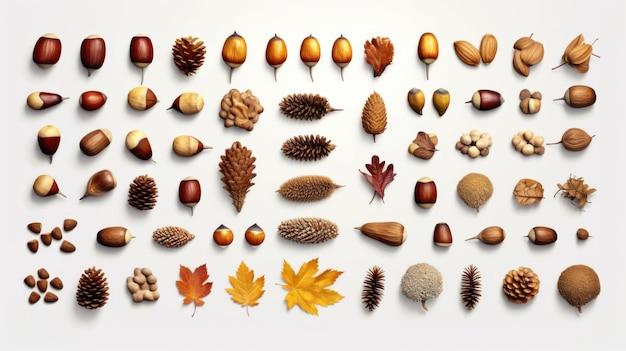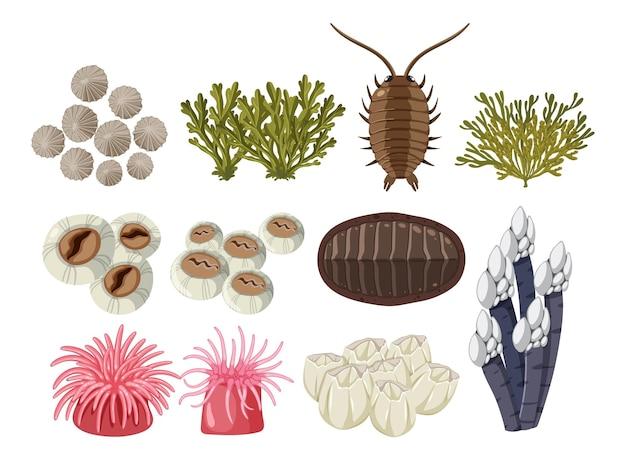Brittle materials play a significant role in our daily lives, sometimes without us even realizing it. From glass windows to ceramic dishes, these materials surround us in various forms. But what exactly defines a material as brittle? Are brittle materials tough? Can they plastically deform like other materials?
In this blog post, we will delve into the world of brittle materials, examining their properties, applications, and notable examples. We will also explore the differences between brittle and ductile materials, answering questions like whether wood can be considered brittle or if glass is truly a brittle material.
So, sit back and prepare to expand your knowledge on these fascinating materials that play a crucial role in numerous industries. By the end, you’ll have a deeper understanding of the traits, uses, and potential limitations of brittle materials. Let’s dive in!
What Are The Examples Of Brittle Materials
Brittle materials are like those delicate glass ornaments that shatter into a million pieces with just a gentle tap. They lack the flexibility and resilience of their more robust counterparts. So, what are some prime examples of these “handle with care” materials? Let’s take a closer look!
1. Glass: The Fragile Superstar
Glass, the poster child for brittle materials. Its mesmerizing transparency often fools us into forgetting its true nature. From delicate window panes to intricate sculptures, glass steals the show with its fragile beauty. But don’t be fooled by its elegance—it can break at a moment’s notice, leaving shards that seem to multiply faster than rabbits.
2. Ceramics: Pottery with a Temper
Not to be outdone by glass, ceramics take center stage when it comes to brittle materials. These delicate wonders grace our homes in the form of elegant porcelain dishes, dazzling figurines, and artistic vases. But beware, for even the slightest impact can transform these treasures into a mosaic of sorrow.
3. Carbon Fiber: Strength Meets Brickle
Carbon fiber, the cool kid on the block, may seem tough and strong, but it, too, falls under the category of brittle materials. Used in high-performance applications such as race cars, bicycles, and even spacecraft, carbon fiber brings the promise of lightness and strength. Yet, like an overinflated balloon, this material can burst under pressure, reminding us that even the strongest can have a breaking point.
4. Certain Metals: Firm But Fragile
While metals often flaunt their strength and durability, there are a few exceptions that prove even the toughest can be brittle. Cast iron, for instance, may be known for its heaviness and robustness, but it can crack under sudden impact. Similarly, white cast iron may hold its own in terms of hardness, but it lacks the ductility to withstand deformation. So, while most metals are reliable and tough, a select few teach us that not everything that glitters is tough.
5. Rocks: Solid, Yet Sensitive
Observing nature, we find that even seemingly invincible rocks fall into the category of brittle materials. Take granite, for example. Known for its majestic presence in countertops and monuments, granite can succumb to fractures and chipping with a forceful blow. Even the unyielding limestone caves under pressure, proving that time and stress can wear down even the hardiest of materials.
6. Concrete: A Delicate Dance
Now, let’s talk about the ubiquitous concrete. Sturdy and reliable in its hardened form, concrete can be found constructing our buildings, bridges, and roadways. It appears unyielding, but under certain circumstances, it can crack and crumble like an abandoned sandcastle. So, next time you marvel at a towering concrete structure, remember that even the mightiest can have a brittle side.
7. Ice: Cold and Crisp
Finally, we arrive at a substance that epitomizes brittleness in a literal sense: ice. Delighting us with its sparkling beauty, this frozen wonder can transform landscapes into icy dreams. Yet, one wrong step and crack—there goes your elegant ice sculpture, shattered into a thousand icy fragments. So, remember, while ice might make our drinks refreshing, it also serves as a chilling reminder of how even the most captivating materials can be easily broken.
Now that we’ve explored a variety of brittle materials, it’s clear that fragility can be found in even the most unexpected places. So, handle with care, my friends, and remember that even the most delicate can teach us valuable lessons about strength and resilience. Stay resilient and keep shining!
FAQ: What Are The Examples Of Brittle Materials
Brittle materials are known for their lack of ductility, making them prone to fracture rather than deformation. In this FAQ-style blog post, we’ll explore the characteristics of brittle materials, their practical applications, and examples that showcase their brittleness.
What Is Ductility
Ductility refers to a material’s ability to undergo plastic deformation without fracturing. In simpler terms, it is the property that allows a substance to be stretched or bent under applied stress. Ductile materials can be easily formed into different shapes without breaking.
Are Harder Materials More Brittle
Not necessarily. Hardness and brittleness are two distinct material properties. Hardness measures a material’s resistance to indentation, while brittleness relates to its tendency to fracture under stress. While some brittle materials may be hard, such as glass, there are also hard materials that are not brittle, like many metals.
Are Brittle Materials Tough
No, brittle materials are not generally considered tough. Toughness is the ability of a material to absorb energy and deform plastically before fracturing. Brittle materials tend to have low toughness because they lack the ability to deform substantially before breaking.
Can Glass Plastically Deform
No, glass cannot plastically deform. It is an ideal example of a brittle material. When stress is applied, glass tends to shatter without significant plastic deformation. This is why it is important to handle glass objects with care to avoid accidental breakage.
What Is a Brittle Material
A brittle material is one that exhibits little or no plastic deformation when subjected to stress, resulting in sudden fracture or failure. These materials have limited resistance to applied forces, making them susceptible to cracking or snapping rather than bending or stretching.
Where Are Brittle Materials Used
Brittle materials find various applications in everyday life and industrial sectors due to their unique properties. Some common uses of brittle materials include the manufacturing of glassware, ceramics, cast iron, and certain types of thermoplastics.
What Are Examples of Ductile Materials
Examples of ductile materials are copper, aluminum, gold, and steel. These materials have high ductility, allowing them to be easily shaped or stretched without fracturing. Their ability to undergo plastic deformation makes them invaluable in industries such as construction, automotive, and manufacturing.
Are Diamonds Brittle
Yes, diamonds are considered brittle. While diamonds are renowned for their hardness, they are also inherently brittle. Applying force in specific directions can cause them to cleave or fracture. This brittleness, however, does not diminish their beauty or value.
What Are the Examples of Brittle Materials? Explain Why They Are Considered Brittle.
-
Glass: Glass is a prime example of a brittle material due to its atomic structure. Its rigid and amorphous nature lacks the ability to undergo significant plastic deformation, resulting in immediate fracture when subjected to stress.
-
Ceramics: Ceramic materials such as porcelain and pottery are brittle because of the strong covalent bonds between their atoms. These bonds prevent substantial deformation and make ceramics prone to fracturing under stress.
-
Cast Iron: Despite its high strength, cast iron is brittle. Its carbon microstructure forms graphite flakes, creating areas of weakness within the material. These weak spots make cast iron prone to sudden fracture.
Is Wood a Brittle Material
Wood is not categorized as a brittle material. It is considered a natural composite material that displays significant flexibility and toughness. Wood can undergo plastic deformation, allowing it to be shaped and bent without breaking easily.
What Is the Difference Between Ductile and Brittle
The primary difference between ductile and brittle materials lies in their ability to undergo plastic deformation. Ductile materials can be stretched, bent, or deformed under stress, while brittle materials tend to fracture or break without significant deformation.
Is Concrete Ductile or Brittle
Concrete is usually considered a brittle material. While it can withstand compression forces, it has limited ability to withstand tension. Concrete structures may undergo cracking when subjected to excessive tensile stress, signifying its inherent brittleness.
What Is an Example of Hardness
An example of hardness is diamond. Diamond is renowned for its exceptional hardness and is widely regarded as the hardest natural material on Earth. Its hardness is attributed to the strong carbon-carbon bonds that make up its crystal structure.
Is Glass a Brittle Material
Yes, glass is a classic example of a brittle material. Due to its atomic structure, glass lacks the internal structure necessary for substantial plastic deformation. Instead, it tends to fracture when subjected to stress, making it brittle.
What Things Can Be Brittle
Various materials in our daily lives can exhibit brittleness to some extent. Examples of things that can be brittle include certain types of plastic, ceramics, glass objects, brittle metals like cast iron, and even some foods such as crackers or cookies that can snap easily.
Why Are Some Materials Brittle
Materials can be brittle due to several factors. One key reason is their atomic or molecular structure, which prevents them from undergoing significant plastic deformation when stressed. Additionally, the presence of impurities, crystal defects, or high levels of hardness can contribute to brittleness in certain materials.
What Is a Brittle Example
A classic brittle example is a ceramic plate that shatters when dropped on a hard surface. The plate, made of ceramic material, lacks the ability to deform plastically under the impact of the fall, resulting in immediate fracture.
Why Do Brittle Materials Fail
Brittle materials tend to fail due to the rapid propagation of cracks or fractures caused by applied stress. When stress exceeds the strength of the material, the cracks grow and spread, ultimately leading to catastrophic failure without warning.
Is Wood Tough or Brittle
Wood is generally considered tough rather than brittle. Its fibrous structure allows it to absorb energy and undergo plastic deformation, reducing the likelihood of sudden fracture. This toughness is evident in applications such as construction and furniture making.
What Is Ductility in Simple Words
Ductility, in simple terms, refers to a material’s ability to stretch, bend, or undergo plastic deformation without breaking. Ductile materials can be easily shaped or molded under applied force, making them more versatile in various industries.
Is Zinc a Brittle Metal
No, zinc is not typically classified as a brittle metal. While zinc can exhibit some degree of brittleness under certain conditions, it generally possesses good ductility. Zinc is commonly used in alloys and galvanizing processes, indicating its ability to undergo plastic deformation.
In this FAQ-style blog post, we’ve explored the characteristics of brittle materials and provided examples to illustrate their brittleness. Understanding the properties of brittle materials is crucial when designing and working with different substances. Whether it’s glass, ceramics, or certain plastics, their inability to deform significantly under stress highlights the importance of handling them with care.

